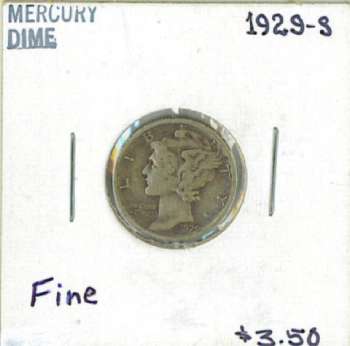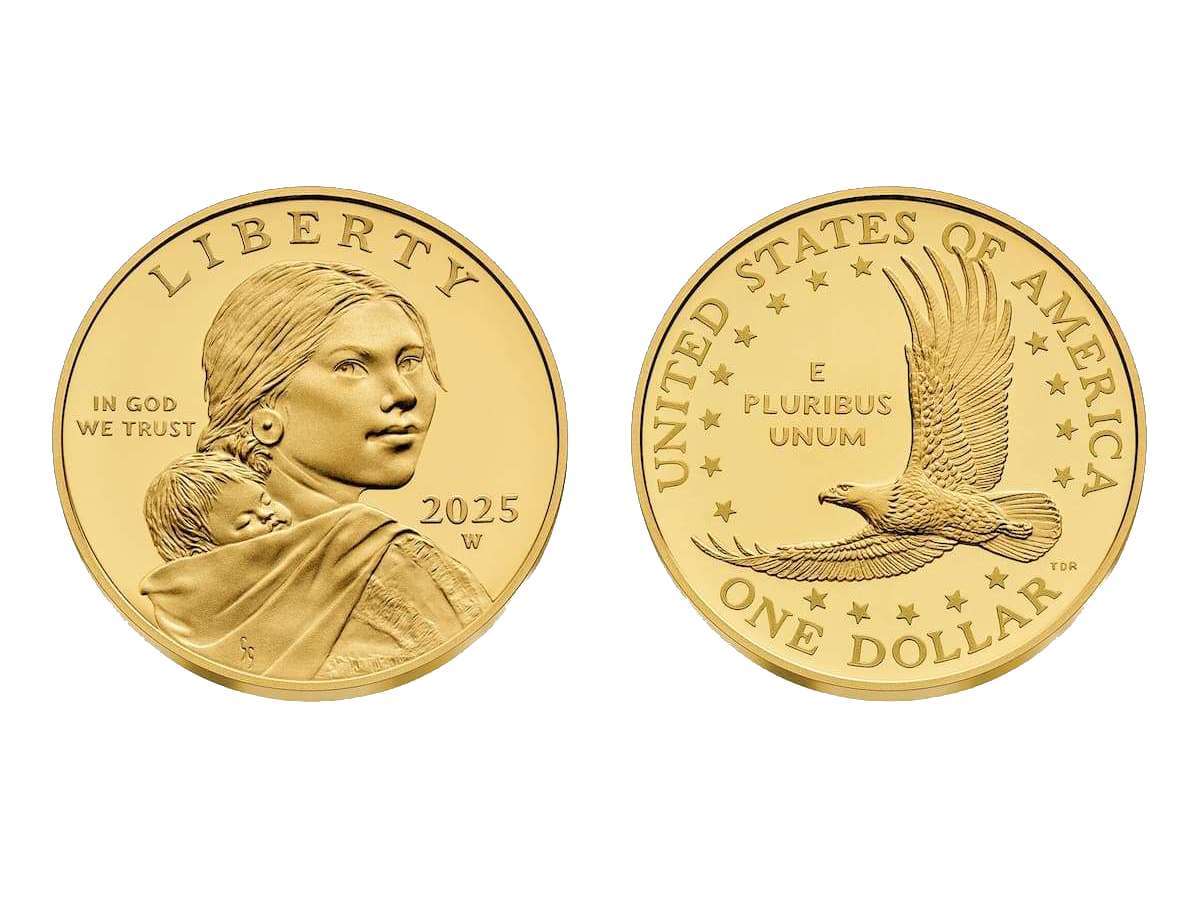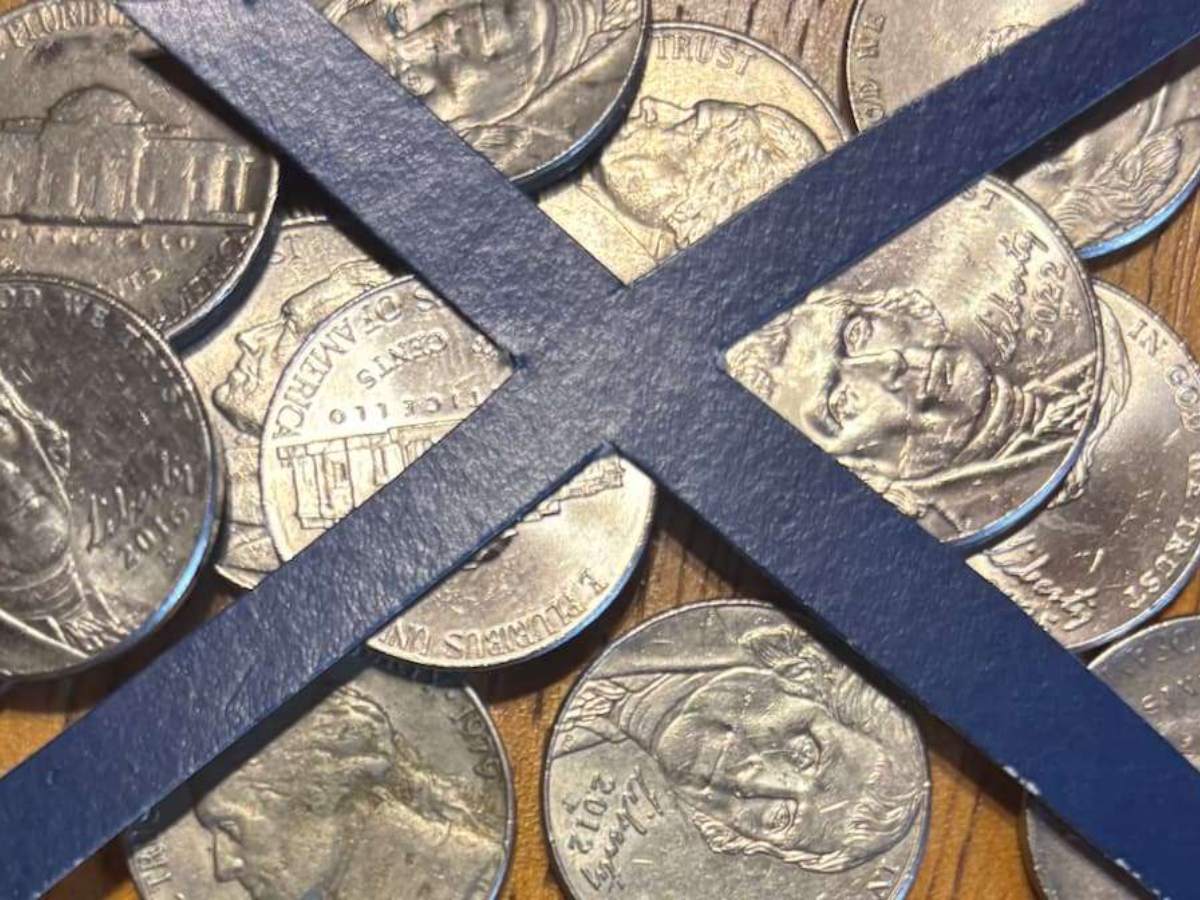In my last article I wrote about coin folders.
But most coin collectors also have coins in some sort of individual holders — especially the little cardboard coin holders that have a plastic (or mylar) window in the middle.
I think people have been using them for most of the last century!
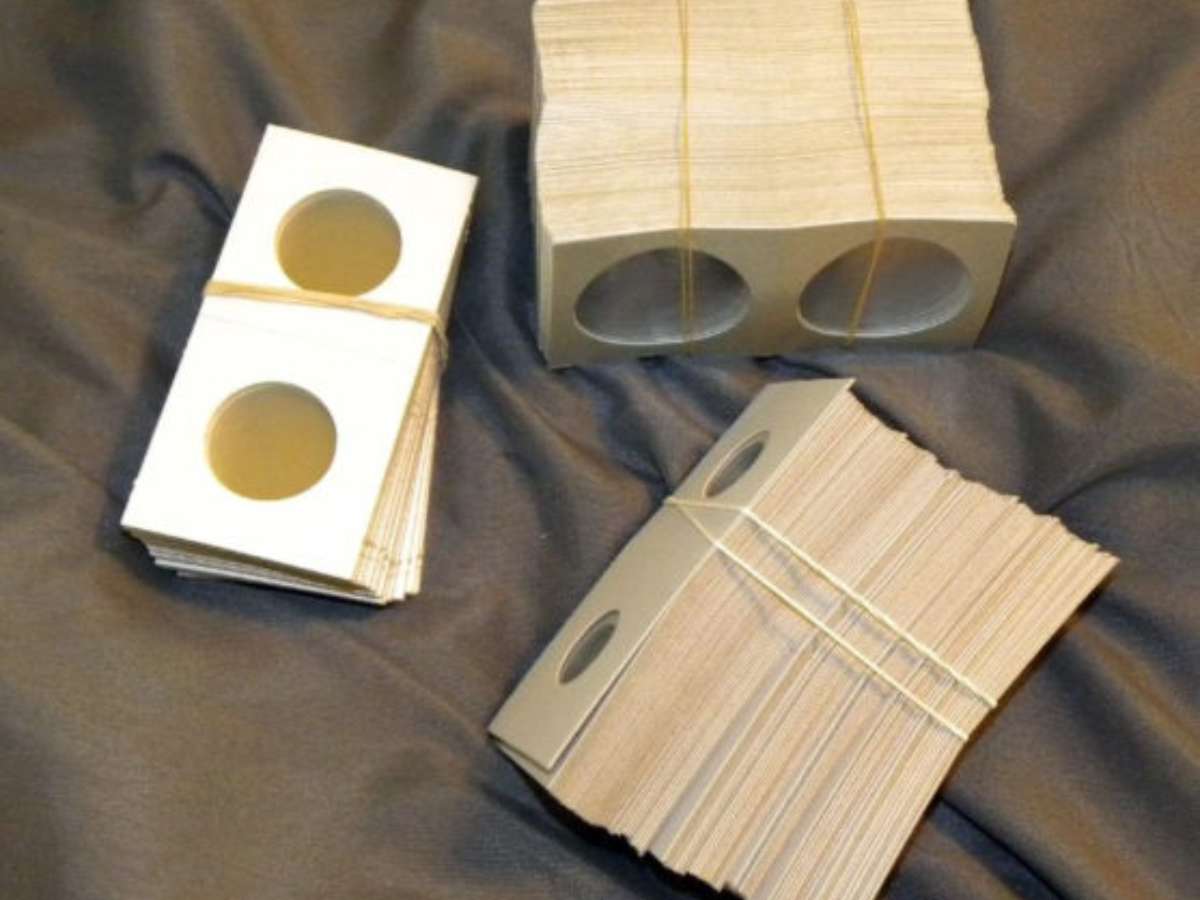
The fact is, cardboard coin holders are one of the best ways to keep your coins safe.
NO Coin Holder = Coin Damage
Without some sort of holder, your coins will shift around and slide over each other, bang into each other, and so on.
Over time, this causes so much wear that your coins will actually go down in grade (the amount of wear on the coin)… and value!
For example, “uncirculated” coins will become classified as “circulated,” and that is a very great loss indeed — often one-half to two-thirds of its value!
As very sad proof of this, here’s a picture of a coin I own which was “carefully” kept in a drawer lined with velvet along with many other coins for several decades:
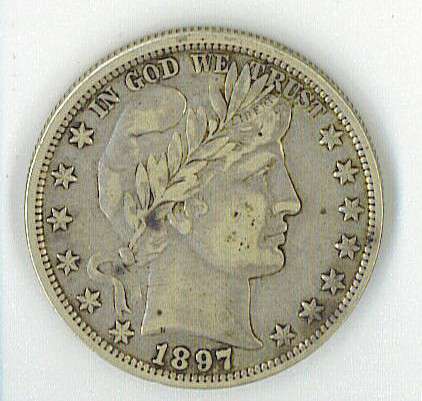
What you may notice the most about this coin is not the amount of wear on it, but that the worn areas actually have a different color from the rest of the coin. While this is still a very nice Barber half dollar, it was once a far more beautiful (and valuable) one.
Sizes Of Cardboard Coin Holders
The two main parts of cardboard coin holders (often called “coin flips”) are: overall size and window size.
Cardboard flips themselves come in 2 different sizes:
- 1-1/2 inch by 1-1/2 inch (sometimes called 1.5×1.5’s)
- 2-inch by 2-inch (commonly referred to as 2×2’s)
Size is the only real difference between the two (other thanm the fact that the 1.5×1.5’s are too small to hold a dollar coin).
See why some collectors prefer 2×2’s and why others prefer 1.5×1.5’s.
Cardboard holders come with pre-sized holes (or “windows”) — made specifically for the denominations of coins that you’ll be putting inside them.
Cardboard flips have windows in these 6 sizes (from smallest to largest):
- Dimes
- Pennies
- Nickels
- Quarters
- Half dollars
- Dollar coins
NOTE: If you have some very old cardboard coin holders, then they may not be made of coin-friendly material to protect your coins for the long term. For example, the cardboard may have acid in it (which can leach onto your coins), and the plastic windows may have PVC (which can leach onto your coins AND cause the windows to shrink & turn yellow). If in doubt, or you have a coin in a holder that is deteriorating, then you need to put it in a new holder.
I buy my cardboard coin holders from a local coin shop for just 4 cents each (prices vary by shop and manufacturer). That’s not a big investment for something that is so important and useful!
What To Write On Your Cardboard Coin Holders
Most collectors put some information about the coin that’s in the holder on the front and/or back of the coin holder itself. This is convenient — since the holder has a plain white surface on each side.
The information written on a cardboard coin holder is completely up to the owner.
People usually write these things on their cardboard holders:
- The coin’s date AND mint mark (the bare minimum info)
- The value of the coin (OR the owner’s asking price)
- The type of coin it is (“Mercury dime” or just “dime,” for instance)
- The grade of the coin (such as “good” or “fine”)
Here’s an example with all 4 of these things written on it:
Sometimes, people will put more private things on the back of the cardboard coin holder — such as the date they bought the coin, or the price they paid for the coin.
Additional Notes About Coin Holders
- If you’re putting coins into holders yourself, be sure to hold your coins by the edges — so your fingers don’t smudge or put fingerprints on them.
- Secure your cardboard coin holders closed with 2 to 4 staples (using a standard-sized stapler) — enough to keep the cardboard holder firmly closed at all edges.
- Remember, any information that is written on the coin holder by someone else is subjective. For example, a grade written on a coin holder is someone’s opinion and may be different from yours. A price written on a coin holder may not reflect what it’s actually worth or what you would want to pay for it. (This is why many people put grades and prices on the BACK of the holder or not at all.)
- Several other options for individual holders exist. For example, one of my local coin shops carries simple plastic holders for as little as 10 cents. Plastic coin holders that are archival cost somewhere between 20 to 50 cents. (Archival means they’re 100% safe for the coins and will not deteriorate over time.) Since plastic holders have no writing surface, they usually come with a small pocket to put a piece of paper or cardboard in.
I hope your collecting has been enhanced by this information about the cardboard coin holders you see at your local coin shops and shows.
Happy hunting!


